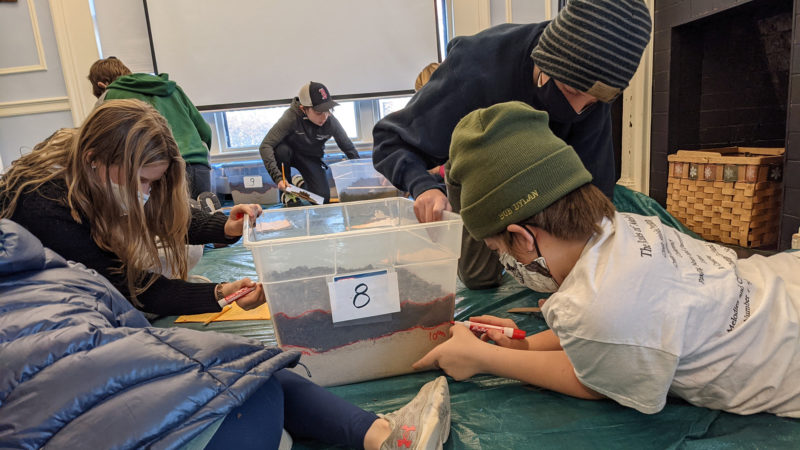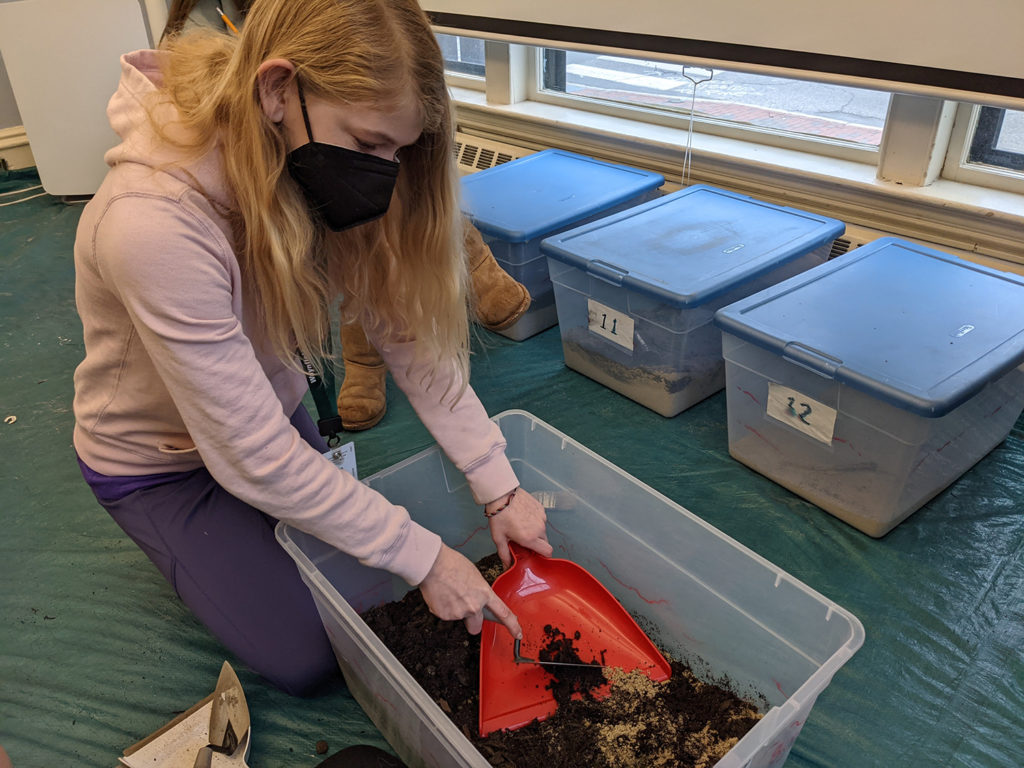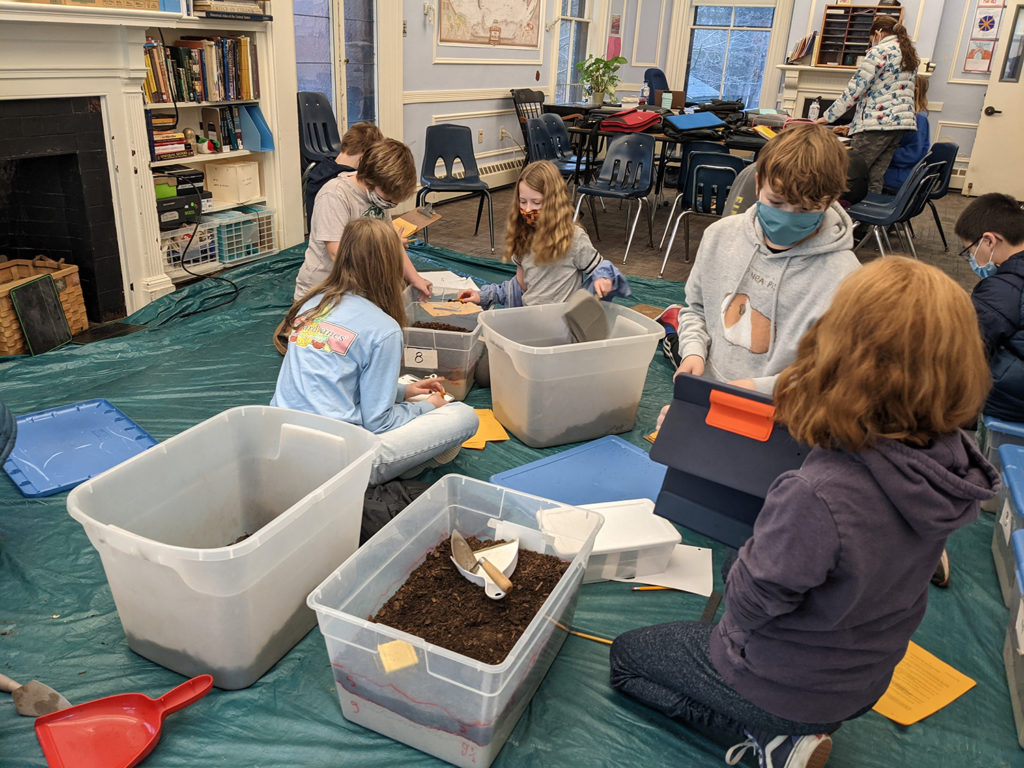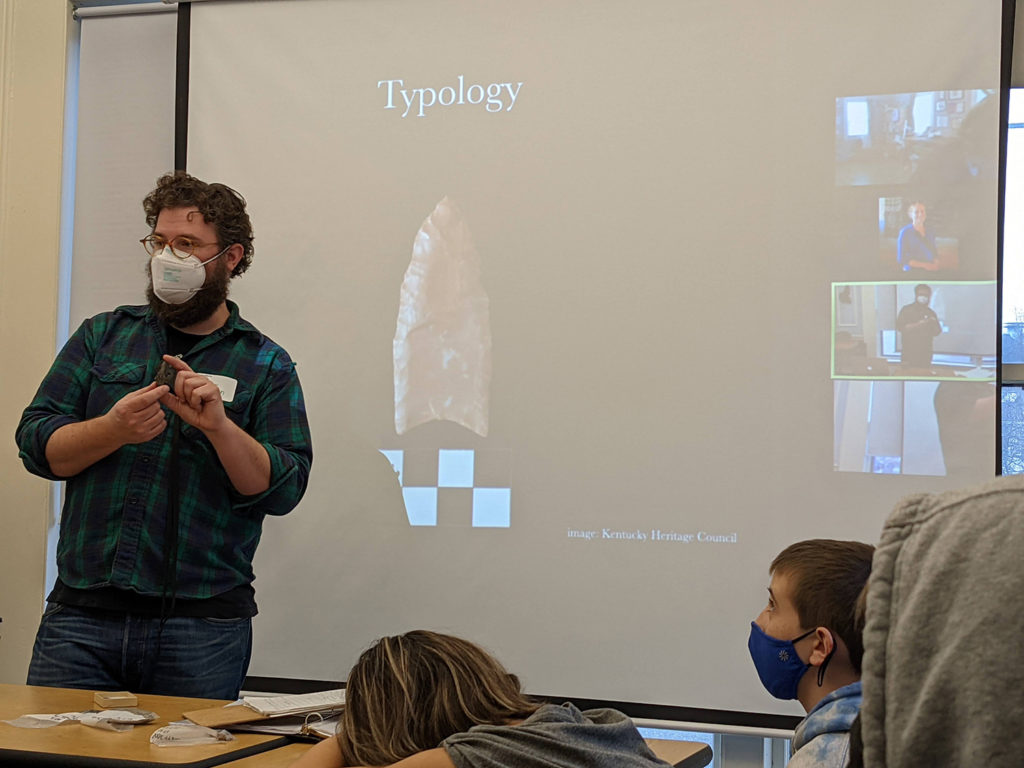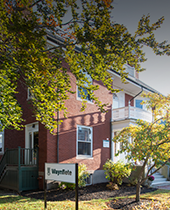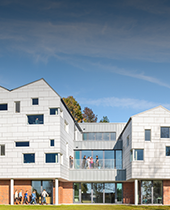Indoor archaeological dig
By Lindsay Clarke
In sixth-grade history, students recently used artifacts rather than documents as their primary sources for studying the ancient civilizations of the Mediterranean region. To build a foundation for this study, their fall archaeology unit allowed them to develop the skills of archaeological excavation and documentation, as well as artifact analysis. Over the course of about a month, students did the work of archaeologists, carrying out their digs in teams of 3–4, each assigned to a bin that included layers of soil (strata) and carefully hidden artifacts that adhered to a theme. Students were tasked with carefully documenting their excavation work and developing a hypothesis as to the theme of their box—from where and when did their artifacts originate?
The final products of their work were displayed in group binders full of sketches, charts, and written descriptions, as well as in presentations delivered to their peers featuring photographs of their finds and a summary of both their process and hypothesis. At the conclusion of the unit, we were fortunate to welcome Waynflete alum (class of 2002) and UNE professor of archaeology Arthur Anderson to the classroom to speak to us about his work, share artifacts with the class, and answer student questions about his work in the field.

